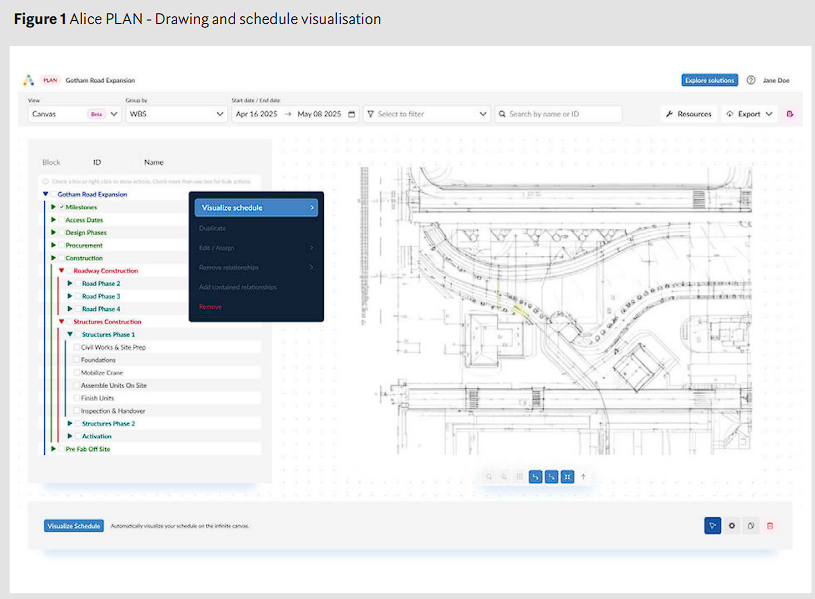Finding a software solution
As semiconductor construction comes up against so many challenges and critical deadlines, careful planning and scheduling must be carried out throughout the construction project to keep it on time and to budget.
This is where AI software can help, by effectively allocating resources and prioritising tasks, ensuring that the most critical sequences are completed first.
AI-powered scheduling tools like ALICE Technologies help clients understand the cost and time implications of decisions and make more informed choices. It ensures teams have as much information as possible about how to effectively achieve their deadlines.
Improving efficiency
With ALICE, users upload an existing baseline schedule from Oracle Primavera P6, P6 cloud or Microsoft Project, reducing the amount of scheduling information that needs to be entered manually.
Users can use the software to run AIpowered ‘what-if’ analyses to optimise their uploaded programme or model for cost, time, resource idle time, reducing resource peaks, or other objectives.
ALICE will simulate these scenarios to generate multiple feasible schedules based on the project’s optimisation goals.
The benefit of all this work is that the execution strategies, optimum
schedules and agreed risk management strategies can be taken forward for use in the construction of semiconductor fabrication sites.
Looking ahead, the semiconductor industry will continue to face challenges related to resource allocation, both in terms of materials and labour. Effective project management tools will be essential in navigating these challenges and helping to meet the growing demand for semiconductors. The continued adoption of advanced project management tools will play a significant role in addressing future challenges and sustaining global industry growth.

 Customer Success Manager, ALICE Technologies
Customer Success Manager, ALICE Technologies
